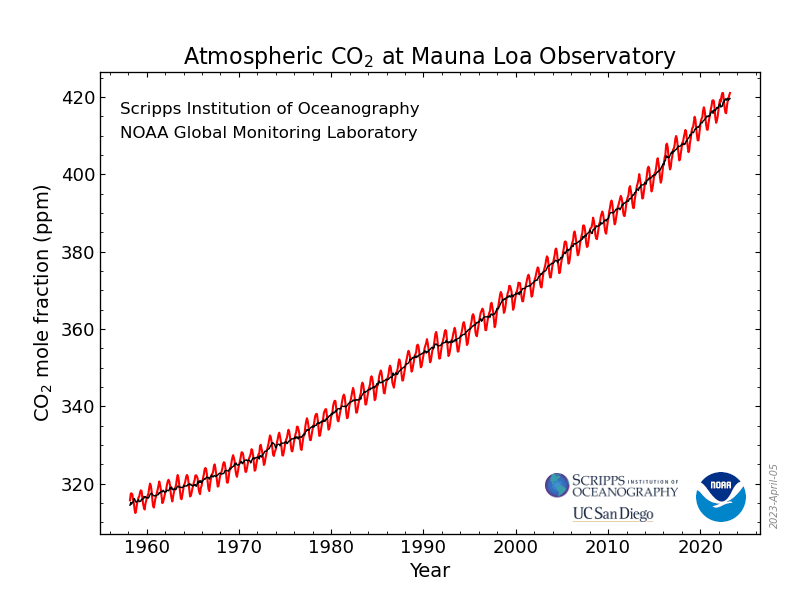Click the link to read the article on the NOAA website:
August 23rd, 2023
Key Findings
- GFDL-ESM4.1, a fully coupled global climate and carbon cycle model which can account for the simultaneous effect of fires, water stress, and plant competition, was used to analyze recent trends and future projections of tropical forest biomass and fire carbon emissions.
- The results showed a possibility of abrupt response of Amazonian carbon stocks to unmitigated future climate change.
- Up to 40% of Amazon forests may begin to convert to savanna before mid-century under high greenhouse gas emission scenarios.
- Results reveal the importance of complex nonlinear responses to projected warming and drying over the Amazon and the urgent need to research postfire recovery and its representation in Earth System Models.
Isabel Martínez Cano, Elena Shevliakova, Sergey Malyshev, Jasmin G. John, Yan Yu, Benjamin Smith, and Stephen W. Pacala. Proceedings of the National Academy of Sciences. DOI: 10.1073/pnas.2203200119
Tropical forests buffer climate change impacts by acting as a major sink for anthropogenic carbon emissions, which is essential to slowing down the buildup of atmospheric CO2. However, the response of tropical forests to more frequent weather extremes and long-recovery disturbances like fires remains uncertain. Analyses of field data and ecological theory raise concerns about the possibility of the Amazon crossing a tipping point, leading to catastrophic tropical forest loss. In contrast, climate models consistently project an enhanced tropical sink.
The authors bring these two bodies of work together by analyzing recent trends and future projections of tropical forest biomass and fire carbon emissions using GFDL-ESM4.1, a fully coupled global climate and carbon cycle model. Experiments with this model accounted for the simultaneous effect of fires, water stress, and plant competition.
The results showed a heterogeneous response of Amazonian carbon stocks. GFDL-ESM4.1 simulates a distinct response of forest carbon stocks across the tropical biome and among climate change scenarios. The model concurs with observations in predicting a larger forest biomass in the Paleotropics (tropical areas of Africa and Asia) than in the Neotropics (tropical Americas) under current climate conditions. Projection experiments suggest that climate change will exacerbate regional differences in tropical forest biomass.
Under low emission scenarios, enhanced productivity due to CO2 fertilization promotes increases in forest biomass that lasts until the end of the century. Under high emissions, positive trends reverse after 2060, when simulated fires prompt forest loss that results in a 40% decline in tropical forest biomass by 2100. Projected fires occur under dry conditions associated with El Niño Southern Oscillation and the Atlantic Multidecadal Oscillation, a response observed under current climate conditions, but exacerbated by an overall decline in precipitation. Following the initial disturbance, grassland dominance promotes recurrent fires and tree competitive exclusion, which prevents forest recovery. EC-Earth3-Veg, an Earth System Model (ESM) with a dynamic vegetation model of similar complexity, projected comparable wildfire forest loss under high emissions but faster postfire recovery rates.
The terrestrial biosphere component (LM4.1) of GFDL-ESM4.1 simulates vegetation dynamics by following the fate of individual demographic cohorts of multiple, competing vegetation types, including tropical trees and grasses. Realistic patch dynamics emerge through the simulation of multiple tiles within each grid cell and subgrid scale disturbances like fires. The outcome of height-structured competition among vegetation types and fires results in a mosaic of patches (tiles) with varying degrees of tree dominance, ranging from pure grasslands to forests through savanna landscapes.
These results reveal the importance of understanding complex nonlinear responses to climate change impacts and the urgent need to research postfire recovery and its representation in ESMs. The resilience of tropical forests to climate-induced disturbances should be reassessed. This study demonstrates the importance of taking action to reduce carbon emissions to prevent tropical forest degradation.



One thought on “Abrupt loss and uncertain recovery from fires of #Amazon forests under low #climate mitigation scenarios — NOAA”